Featured Photo by Magnolia1000 / CC BY 2.0
A field guide on how to identify & propagate Rhodora (Rhododendron canadense), a native hardiness zone 2 perennial plant.

Hardiness Zone: 2-6

Soil Type: Acidic, moist, peat.

Water: High, likes wet, swampy environment.

Exposure: Full Sun to Partial Shade
How to Identify Rhodora (Rhododendron canadense)
Rhodora shrubs rarely grow much taller than 3-4 feet in height but can spread up to 6 feet wide.
Flowers
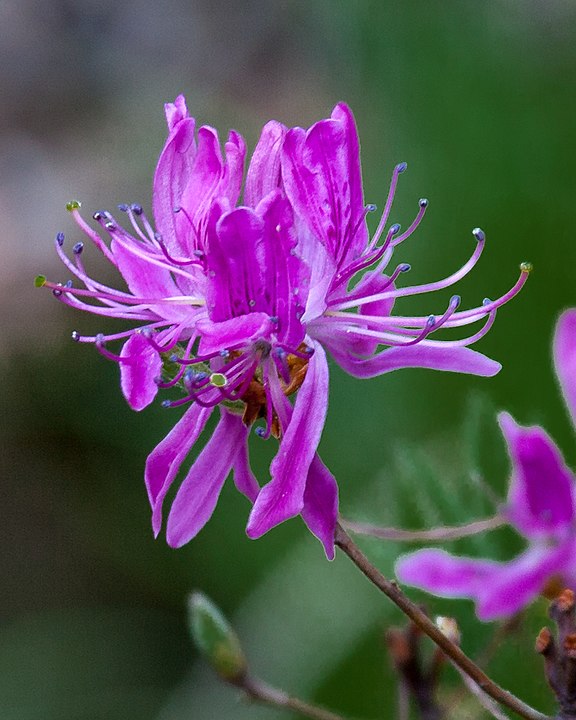
The easiest way to identify Rhodora is by its pink flowers. The flowers are typically around 1.5 inches in diameter and have five petals.
Leaves
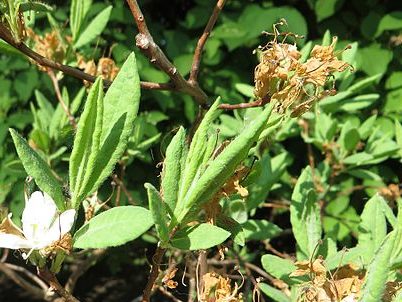
The leaves are also distinctive, being long, oval to elliptical, and curled inwards with a pointed end.
They grow in an alternate arrangement, and each leaf has a ciliate to entire margin.
The hairy leaves are dark green above, and light green below and grow from 1-8cm long.
Flowering Season
Rhodora flowers bloom from May to early June.
Habitat
It’s a plant native to the boreal forests of Quebec and Ontario. Its range spreads south to northeastern states such as Maine, Vermont, Connecticut, New Hampshire, and New York.
Rhodora’s habitat is in moist, shady areas near water. They prefer bogs and poorly drained soils.
They grow in disturbed sites. meadows, fields, and shores of rivers.
Wildlife Value
Rhodora plants provide food and cover for wildlife.
They provide nectar for bees and other insects, and their leaves and flowers provide food for wildlife.
Rhodora is a host plant for the Columbia silkmoth (Hyalophora columbia).
4 Techniques to Propagate Rhodora (Rhododendron canadense)
You can propagate Rhodora by rooting stem cuttings, layering, dividing the clumps, or planting seeds.
- Stem cuttings: When you cut off a piece of the plant and root it.
- Layering: When you take a living plant and burrow part of it underground to form roots.
- Dividing: When you take a whole plant and split it.
- Planting seeds: When you collect the wild seed pods and germinate new plants.
Let’s look at each in detail:
1. Stem Cuttings
You can propagate Rhodora (Rhododendron canadense) by taking softwood or semi-hardwood stem cuttings.
Softwood cuttings are taken in early summer on fresh new growth and semi-hardwood are taken mid-summer on the year’s growth that’s got partly hard.

- Identify a stem with new growth on it and see where it goes from green to brown.
- With a sharp, sterile knife, cut a stem just below the transition, and below a node.
- Length should be at least 4 inches long, the cut should be at a 45-degree angle.
- Remove the leaves from the bottom 2 inches of the stem.
- With a razor blade, wound the cutting to expose the xylem, 2cm by 2mm cut.
- Dip the cut end of the stem in rooting hormone K-IBA (indole-3-butyric acid).
- Place the stem in a container filled with a moist propagation medium. (3:1 Perlite:Peat)
- Place the container in a well-lit area, but away from direct sunlight.
- Keep moisture up, cover the propagator with plastic to hold moisture. Closed-off propagators with vents are the best for this.
Roots will form and be ready for transplant within 8 weeks.
Learn how to propagate stem cuttings like a pro with our plant propagation guide.
2. Layering
To propagate Rhodora plants by layering, you will need to take a healthy stem from an existing plant and bend it down to the ground.
Make a small cut in the stem, dust with rooting hormone, and then cover it with soil.
Make sure to keep the soil moist and wait for the new plant to grow.
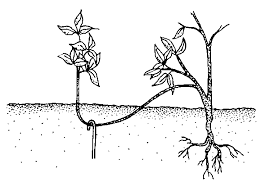
Within 2 months, there should be enough roots to split the stem apart from its parent.
After that, you can transplant, but keep moisture and watering up for some time to give the plant a chance to acclimate.
3. Division
When plants are young and have not yet bloomed, use a sharp knife or spade to divide them into two or more parts.
Each part should have at least one healthy bud.
Replant the divisions immediately.
4. Germination
Collect the ripe seed pods in the fall and spread them out to dry. Once they are completely dry, store them in a cool, dry place until you are ready to plant them.
This is what the seed pods look like:
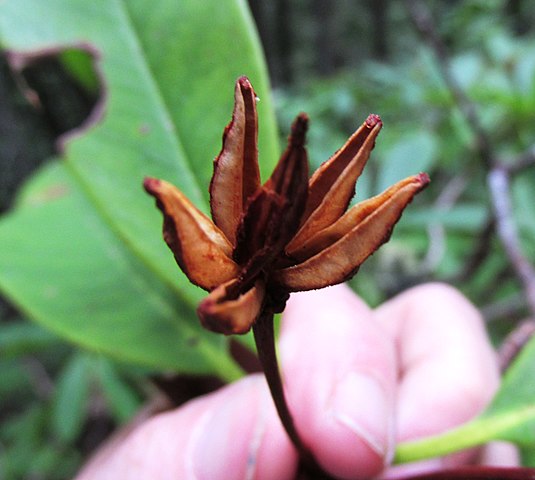
You want to sow Rhodora seeds in late fall or early winter.
Like all rhododendrons, the seeds do not need cold stratification to germinate.
The best technique is to sow the seeds indoors under light or in a greenhouse during winter.
Surface sow in a soil mix of sifted sphagnum peat moss, then cover with plastic to maintain moisture until germination.
Why Seeds Might not Germinate
There are a few reasons why Rhodora may not germinate.
One possibility is that the seeds are not viable and have been damaged or killed.
Another possibility is that the seeds may not have been stored in the correct conditions and have been damaged as a result.
Finally, the seeds may not have been planted in the correct conditions and may not be getting enough water or light.
FAQ
Q: Is Rhodora Poisonous?
A: Yes, Rhodora contains toxins and should not be ingested by humans or dogs.
Q: Is Rhodora evergreen or deciduous?
A: Rhodora can be both evergreen and deciduous, from my experience, the plants lose some leaves but also keep some.

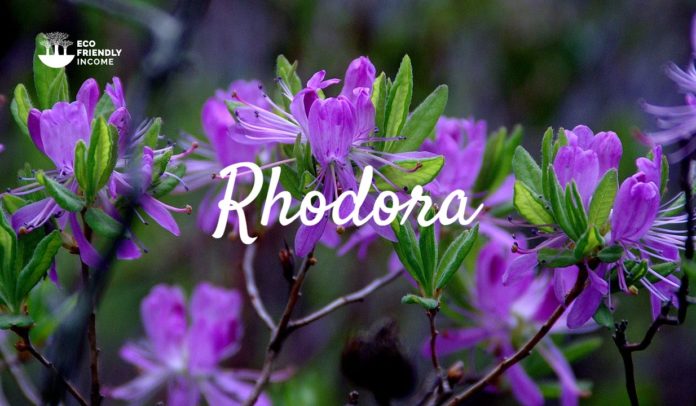
Bonjour Pascal,
Je recherche des semences de rhododendron canadense. J’ai chercher les alentours (région Ottawa et Laurentides) mais sans succès dès ce moment. Il ya a des sources/vendeurs de tel semences au Canada, Ontario, Québec ? Pierre, Orléans, ON ([email protected])
Bonjour Pierre,
Je vais contacter un groupe que je connais pour voir si ils ont des semences de rhododendron canadese et j’en t’en parlerai! Il est aussi possible d’en trouver en nature et des propager si vous avez la chance d’en trouver! Elles aiment pousser en foret de conifere.
Merci. Je sais que j’en ai vu a plusieurs reprise au fur des années mais hélas il semble qu’ils se cachent la que je les recherches !
Bonjour Pierre. Jusqu’à date je n’ai eu aucune chance à en trouver en ligne parmis les groupes. Mais ou je plante cette été il en a beacoups! Je planifiais déjà me faire un inventaire de semences et de boutures alors si vous etes près à attendre, je pourrais surement vous en envoyer vers l’automne!
Merci !